Tom's Hardware Verdict
The Corsair Force MP510 offers more value than its predecessor along with better endurance ratings than other consumer flash-based SSDs. That, plus nearly class-leading sequential performance and a five-year warranty, make Corsair’s MP510 a Force to be reckoned with.
Pros
- +
Great sequential performance
- +
Class-leading endurance ratings
- +
Good power efficiency
- +
Black PCB
- +
Affordable
Cons
- -
Lower-than-average application performance
Why you can trust Tom's Hardware
The Force is strong with this one
Corsair’s Force series SSD line has a strong lineage tracing back to 2010. Having gone through multiple controllers, NAND types, and recently evolving from strictly SATA to the PCIe interface with multiple form factors, Corsair’s decisions and products have been on the leading-edge year after year, getting better every step of the way.
Today, that history is what drives the company’s latest SSD, the Force MP510. With a blacked-out PCB, Phison’s E12 controller, and Toshiba’s BiCS3 TLC NAND flash, the MP510 looks good--and brings the performance to match. The drive is flat-out fast, rated up to 3,480/3,000MB/s of read/write throughput. And to top things off, it comes with a longer warranty, greater endurance, and cheaper pricing than its predecessor. With all that said, it is hard not to recommend the MP510 to those looking for a robust M.2 NVMe SSD that comes into the market at a decent price.
Corsair’s Force MP510 is a refresh of the Force MP500 series that brings with it some much-welcomed improvements. Released back at the beginning of February 2017, the MP500 featured Phison’s E7 controller and Toshiba’s 15nm MLC NAND flash. Together, this rather popular combination delivered good performance, but Corsair’s premium pricing kept it out of the hands of many and left it rather uncompetitive. The company is looking to change that with the new MP510.
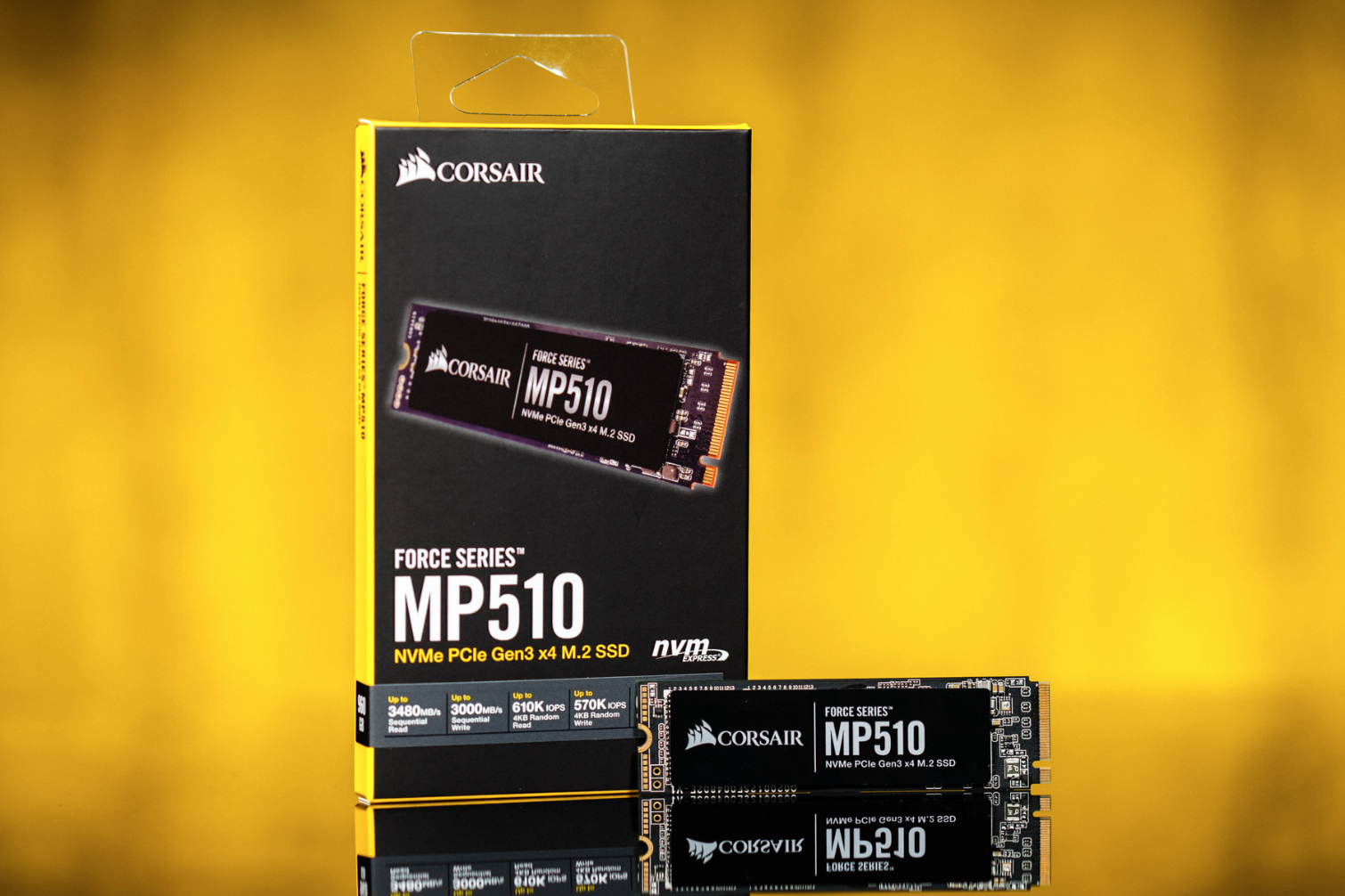
Continuing its relationship with Phison and Toshiba, Corsair has replaced the MP500’s components with the latest offerings from those two companies. It utilizes Toshiba’s 64L 3D TLC NAND flash and Phison’s latest (and highest performance) SSD controller, the PS5012-E12. Many technologies are built into this controller, including StrongECC, SmartRefesh, and SmartFlush.
These technologies work to monitor, refresh, and reconstruct the data in the NAND pages and blocks to ensure data stability and reliability, even during the event of a power loss. The drive also has built-in thermal throttling: If the controller temperatures get too high, thermal throttling will kick in and performance will drop by 50MB/s for every degree over 80 degrees C. That said, operating temperature is rated at up to 70C and the E12 controller runs fairly cool compared the previous E7, so thermal throttling shouldn’t be an issue in most cases.
Specifications
| Product | Force MP510 240GB | Force MP510 480GB | Force MP510 960GB | Force MP510 1920GB |
| Pricing | ? | ? | $239.99 | ? |
| Capacity (User / Raw) | 240GB / 256GB | 480GB / 512GB | 960GB / 1024GB | 1920GB / 2048GB |
| Form Factor | M.2 2280 Single-Sided | M.2 2280 Single-Sided | M.2 2280 Double-Sided | M.2 2280 Double-Sided |
| Interface / Protocol | PCIe 3.1 x4 / NVMe 1.3 | PCIe 3.1 x4 / NVMe 1.3 | PCIe 3.1 x4 / NVMe 1.3 | PCIe 3.1 x4 / NVMe 1.3 |
| Controller | Phison E12 | Phison E12 | Phison E12 | Phison E12 |
| DRAM | DDR4 | DDR4 | DDR4 | DDR4 |
| NAND Flash | Toshiba 64L TLC | Toshiba 64L TLC | Toshiba 64L TLC | Toshiba 64L TLC |
| Sequential Read | 3,100 MB/s | 3,480 MB/s | 3,480 MB/s | 3,480 MB/s |
| Sequential Write | 1,050 MB/s | 2,000 MB/s | 3,000 MB/s | 2,700 MB/s |
| Random Read QD1 | 180,000 IOPS | 360,000 IOPS | 610,000 IOPS | 485,000 IOPS |
| Random Write QD1 | 240,000 IOPS | 440,000 IOPS | 570,000 IOPS | 530,000 IOPS |
| Encryption | AES 256 / TCG Opal | AES 256 / TCG Opal | AES 256 / TCG Opal | AES 256 / TCG Opal |
| Endurance | 400 TBW | 800 TBW | 1,700 TBW | 3,120 TBW |
| Part Number | CSSD-F240GBMP510 | CSSD-F480GBMP510 | CSSD-F960GBMP510 | CSSD-F1920GBMP510 |
| Warranty | 5-Years | 5-Years | 5-Years | 5-Years |
Corsair’s MP510 delivers up to 3,480/3,000MB/s of sequential read/write throughput and is capable of up to 610,000/570,000 random IOPS (read/write). If that doesn’t spark your interest just yet, here’s the kicker: The 960GB model comes with an MSRP of just $239.99, or about $40 less than the competing 1TB Samsung SSD 970 EVO.
While the Force MP510 will eventually be available in four capacities, only the 960GB model is available at launch. The others are expected by the end of 2018, but timing and pricing for the other capacities wasn’t finalized at the time of publication.
| Product | TBW | DWPD | Warranty |
| Force MP510 960GB | 1,700 | 0.93 | 5 |
| MyDigitalSSD BPX Pro 960GB | 1,665 | 0.91 | 5 |
| Samsung 970 PRO 1TB | 1,200 | 0.66 | 5 |
| Adata XPG GAMMIX S11 | 640 | 0.35 | 5 |
| Samsung 860/970 EVO 1TB | 600 | 0.33 | 5 |
| WD Black 1TB | 600 | 0.33 | 5 |
| Intel SSD 760p 1TB | 576 | 0.32 | 5 |
| WD Blue 3D 1TB | 400 | 0.37 | 3 |
| Crucial MX500 1TB | 360 | 0.2 | 5 |
| Intel SSD 660p 1TB | 200 | 0.11 | 5 |
The Corsair Force MP510 features a five-year warranty, an appreciated upgrade from the previous-gen MP500’s three-year warranty. The MP510 smashes even the Samsung 970 Pro’s endurance figures. But while the Corsair drive is essentially the same drive internally as the MyDigitalSSD BPX Pro, Corsair rates its endurance figures a bit higher. At 1.7PB for the 960GB model, the endurance is almost three times that of the Samsung 970 EVO and the WD Black. To put it into perspective, the MP510’s endurance rating at over eight times higher than the Intel SSD 660p!
Note though, that while it supports AES 256 hardware encryption and TCG Opal specifications, the MP510 is not compatible with Windows BitLocker/eDrive. You will need special software like Wave or Win Magic, which are usually deployed in enterprise and business environments, to activate encryption.
| Row 0 - Cell 0 | 240GB | 480GB | 960GB | 1920GB |
| Average Active Read | 6.1W | 6.7W | 6.9W | 7.1W |
| Average Active Write | 3.5W | 4.8W | 5.6W | 6.2W |
| Idle | 30mW | Row 3 - Cell 2 | Row 3 - Cell 3 | Row 3 - Cell 4 |
Power consumption is also well regulated. The MP510 supports APST, ASPM, and the L1.2 power saving mode. It also has a low idle power consumption rating of just 30mW. We will see if our sample aligns with these numbers later in testing.
Software and Accessories
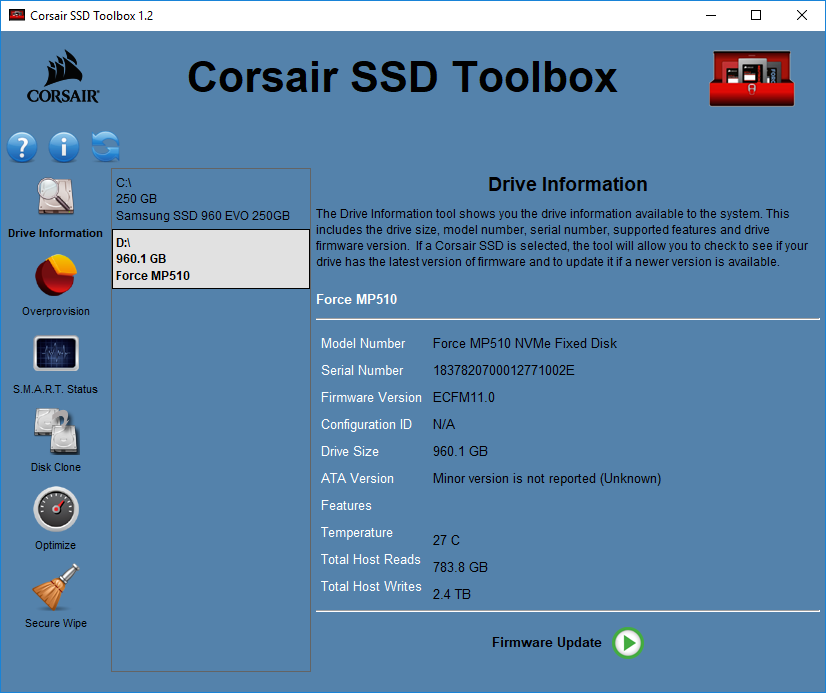
As an optional download, you can install Corsair’s SSD Toolbox. With it, you can monitor the health of your drive, secure erase the drive, update the firmware, and more. While it is a great drive tool, the SSD Toolbox GUI is fairly dated. An updated interface would be welcome considering Corsair’s other software (like LINK and iCUle) is much sleeker looking.
A Closer Look

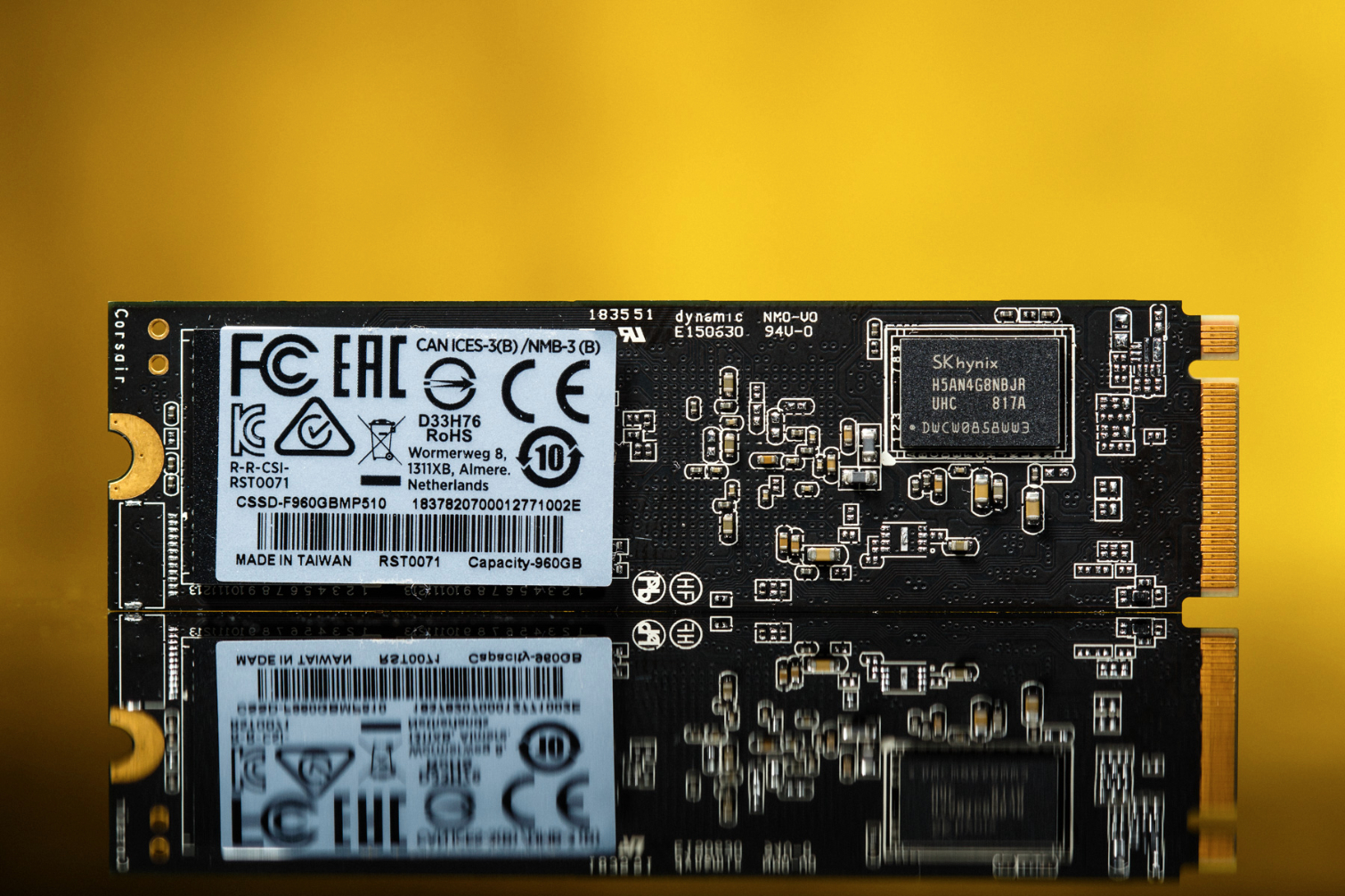
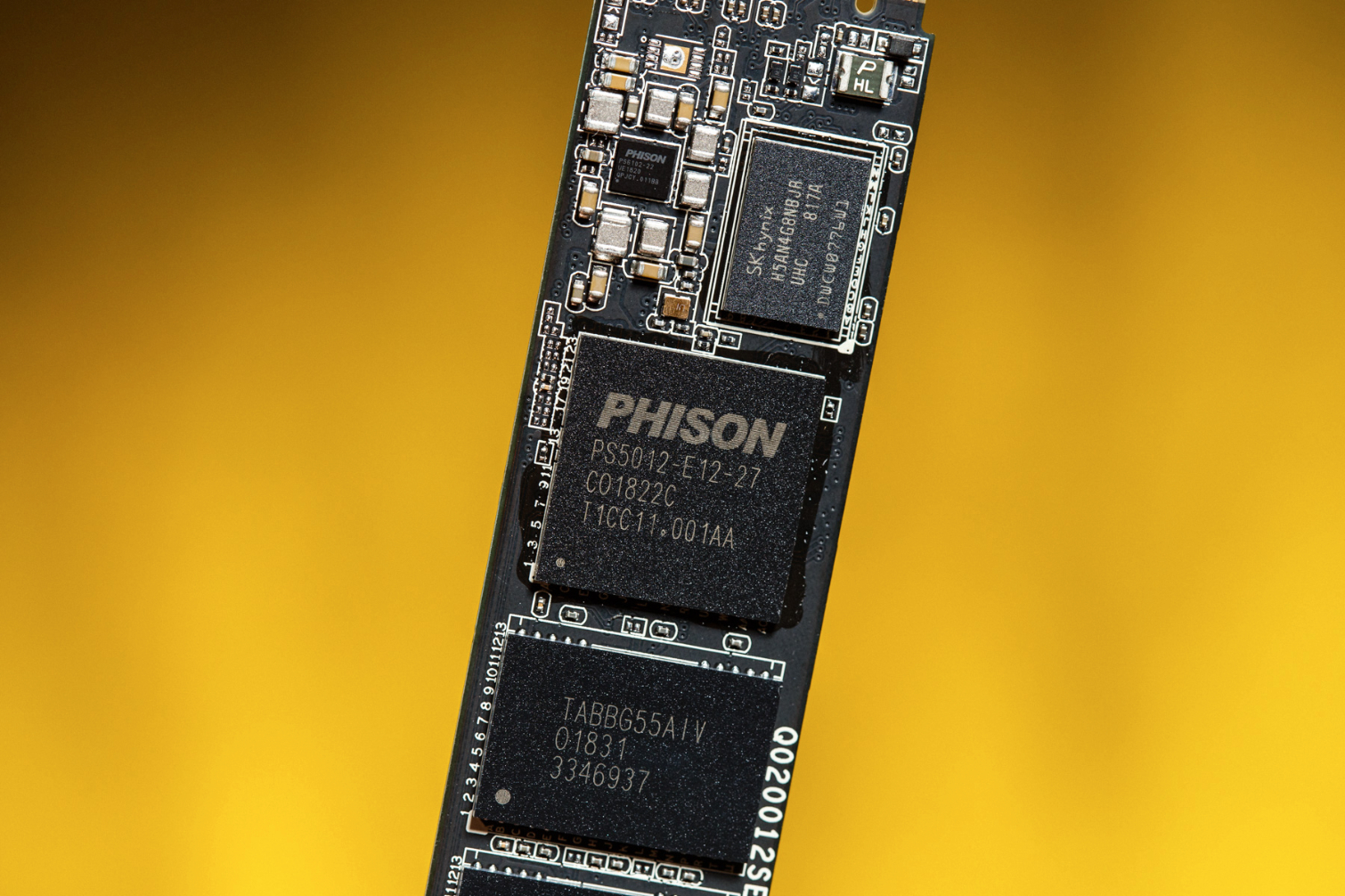

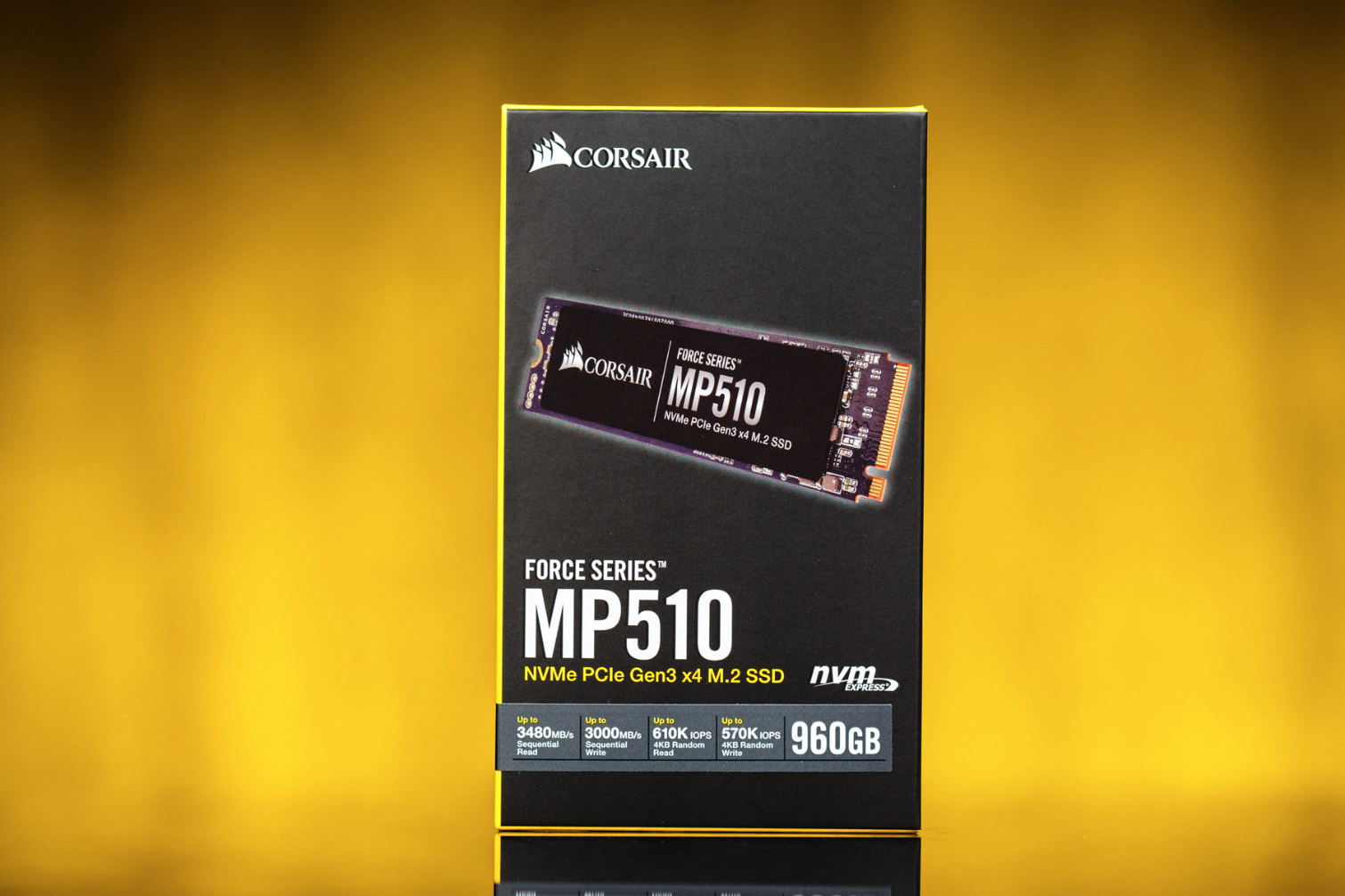
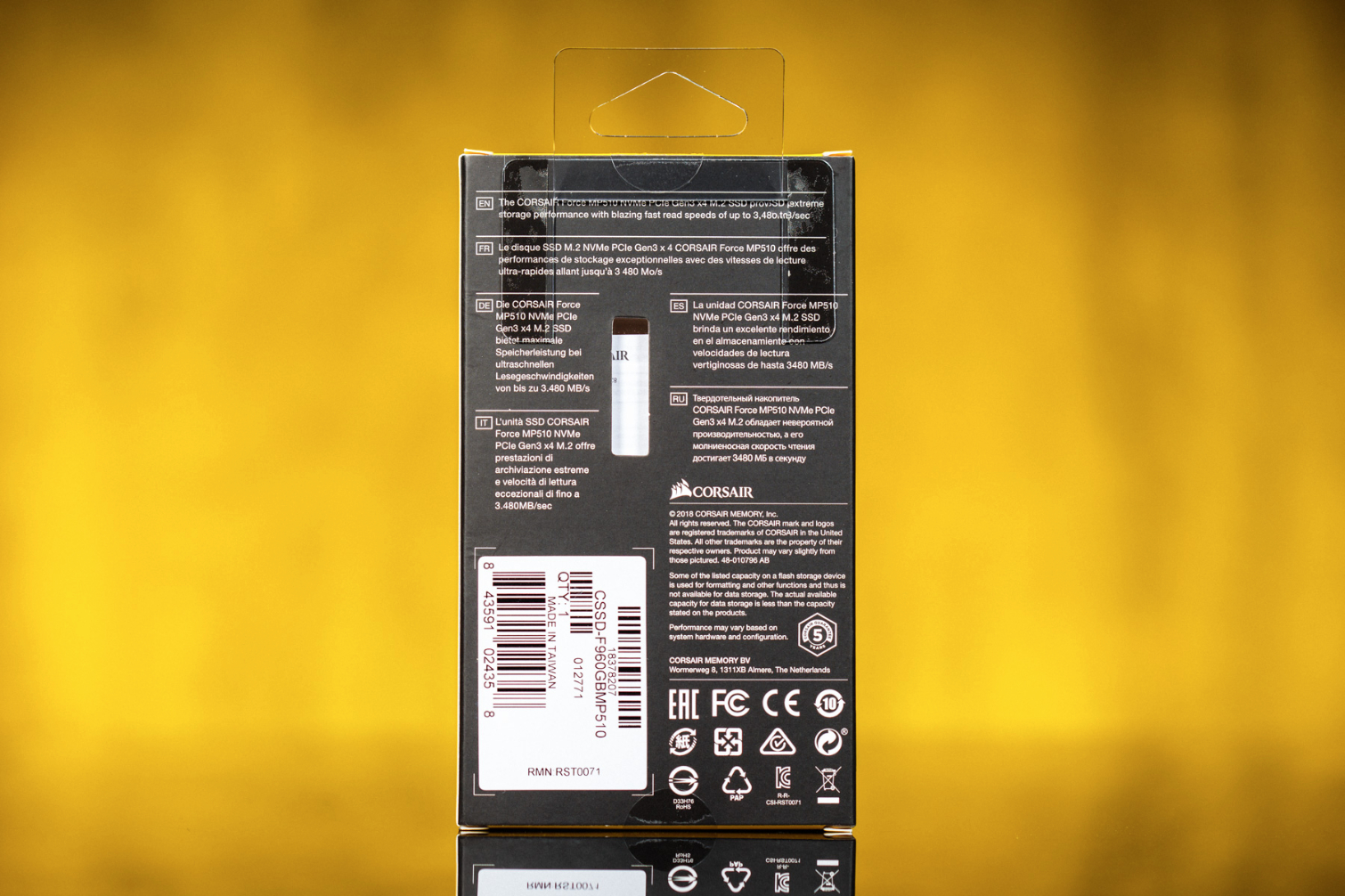
Corsair’s Force MP510 is a PCIe 3.1 x4, NVMe 1.3-compliant SSD that comes in a standard M.2 2280 form factor. The 240GB and 480GB models are single-sided, meaning they only have components on one side of the PCB, while the 960GB and 1920GB models are double-sided, meaning there are components on both sides.
Along with the single Phison E12 controller, the 960GB model features two SK Hynix DDR4 chips (one on each side of the PCB) and 4 Toshiba BiCS3 TLC NAND flash emplacements (two on each side). Once we formatted it in Windows, the 960GB MP510 had a usable capacity of 894GB.
Overall, the blacked-out PCB is gorgeous. But note that the sticker here is just that this time around, unlike the copper-based sticker on the previous model, which acted as a heatsink.
MORE: Best SSDs
MORE: How We Test HDDs And SSDs
MORE: All SSD Content

Sean is a Contributing Editor at Tom’s Hardware US, covering storage hardware.
-
enzoozzytiger Are you sure you get the correct numbers? You list random read at 610,000 IOPS (QD1). Is this for 512 or 4K? Even if it's for 512, it will be the fastest NAND SSD. If it's for 4K, then it even blow the fastest Optane out of the water.Reply -
DogHam Sean gives the the MP510 a 4/5, but in my google search results, it shows 4/10 with 2/5 stars filled in. Is there a way for Tom's Hardware to address that? It's a pretty major difference.Reply -
Hupiscratch Those Samsung 970's steady state workload tests are quite different from that ssd review. Finally the drivers caught up?Reply -
islandwalker @DOGHAM we are aware of this and are trying to address, but it's a development issue, not something editorial can control.Reply -
jimmysmitty Reply21407990 said:Sean gives the the MP510 a 4/5, but in my google search results, it shows 4/10 with 2/5 stars filled in. Is there a way for Tom's Hardware to address that? It's a pretty major difference.
I think its either an issue with how Google is pulling the review or the way TH presents it as even Guru3D gave it a pretty stellar score.